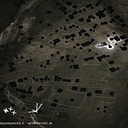Python Basics
Processing is a programming language and visual development environment.
Python is a high level programming language commonly used by data scientists. We will run the Python language in Processing. Technically speaking we are actually running a language called“jython” which allows us to write in the same syntax as Python while the language is seamlessly integrated with Java. For more Python help check out the following link:
File Names
Python is a language files end in .py
In the program Processing we will run the Python language. All Processing file names should end in .pyde
Python Code Cheat Sheet
- Syntax — Python uses indentation to indicate a block of code. This indentation structures the sequence of executing those blocks.
- Comments are made with a #. Comments are not executable code, they are meant to describe code for the programmer’s reference.
- Data Types
- Variables — A variable can have a short name (like
xandy) or a more descriptive name (age,carName,total_volume). A variable name can only contain alpha-numeric characters and underscores (A-z, 0–9, and _ ), and are case sensitive (age, Age and AGE are three different variables). They are often written like this incamelCaseorCamelCase. - local variable are declared inside a function, and can be used only inside that function
- global variable are declared outside any function, and they can be accessed (used) on any function in the program
- Operators — perform operations on variables and values
- List is a collection which is ordered and changeable. Allows duplicate members.
- Tuple is a collection which is ordered and unchangeable. Allows duplicate members.
- Set is a collection which is unordered and unindexed. No duplicate members.
- Dictionary is a collection which is unordered, changeable and indexed. No duplicate members.
- Arrays — store multiple values in one single variable
- If — math logic that executes
ifstatement meets the condition set - Else — math logic that executes if statement doesn’t meet the condition set (catches anything which isn’t caught by the preceding conditions)
- While Loop — execute a set of statements as long as a condition is true.
- For Loop — iterate over a sequence (avlist, a tuple, a dictionary, a set, or a string)
- Functions — block of code which only runs when called, which allows data (parameter) to be passed in and can return a result
- Classes — an object constructor, or a “blueprint” for creating objects
- JSON — a structured list

